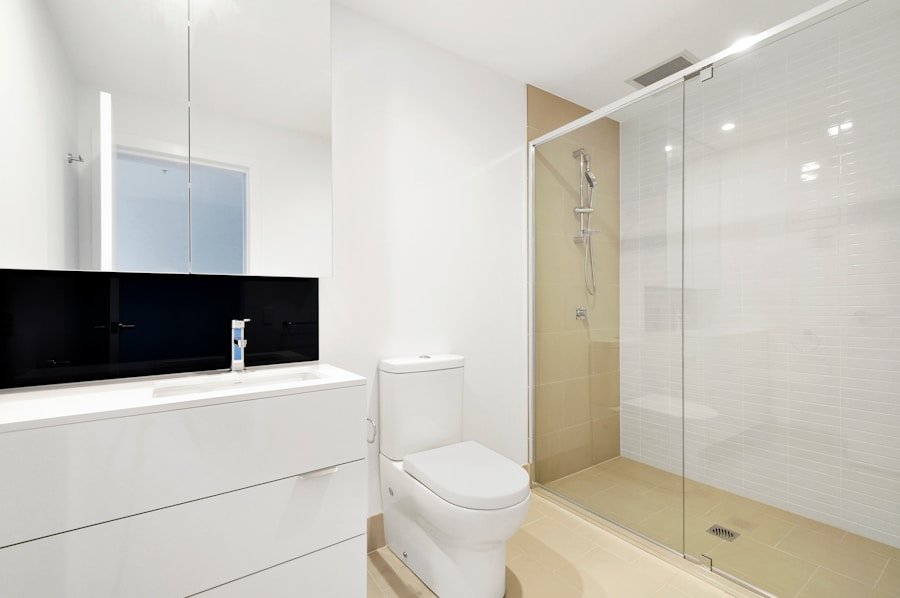When setting up a camping hammock, the first step is to carefully choose the right location. Look for two sturdy trees that are about 12-15 feet apart and free from any dead branches or other potential hazards. It’s important to consider the terrain as well – avoid setting up your hammock on a slope or uneven ground, as this can affect the comfort and stability of your setup.
Additionally, be mindful of any potential wildlife or insect activity in the area, and try to find a spot that is relatively free from these disturbances. Once you’ve found the perfect location, take a moment to assess the surroundings and make sure there are no potential risks such as falling branches or uneven ground. It’s also important to consider the weather conditions – if it’s windy, try to find a spot that is sheltered from the gusts.
By taking the time to carefully select the right location for your hammock, you can ensure a comfortable and safe camping experience.
Key Takeaways
- Choose a location with sturdy trees or anchor points that are at least 12-15 feet apart for setting up your hammock.
- Select a suspension system that is appropriate for the environment and weight capacity of your hammock, such as webbing straps or rope.
- When setting up your hammock, ensure that it is at the right height and angle to prevent discomfort and potential injury.
- Adjust the tension and angle of your hammock to achieve a comfortable and safe position for sleeping or lounging.
- Use tree-friendly straps and anchors to minimize impact on the environment and protect the trees you are using for support.
Selecting the Right Suspension System
After finding the perfect location for your hammock, the next step is to select the right suspension system. There are various options available, including straps, ropes, and webbing, each with its own advantages and disadvantages. When choosing a suspension system, it’s important to consider factors such as weight capacity, ease of setup, and tree-friendliness.
Look for straps or webbing that are at least 0.75 inches wide to minimize damage to the trees and distribute the weight of your hammock more evenly. It’s also important to consider the length of your suspension system – aim for straps that are at least 10-15 feet long to accommodate a wide range of tree distances. Additionally, consider the adjustability of the suspension system, as this will allow you to fine-tune the tension and angle of your hammock for maximum comfort.
By carefully selecting the right suspension system for your camping hammock, you can ensure a safe and secure setup that minimizes impact on the surrounding trees.
Setting Up Your Hammock Properly
Once you’ve chosen the right location and suspension system, it’s time to set up your hammock properly. Start by wrapping the straps around the trees at a height of about 4-5 feet from the ground, making sure they are secure and free from any knots or tangles. Next, attach the carabiners or hooks from your hammock to the straps, making sure they are properly locked in place before putting any weight on the hammock.
After attaching your hammock to the straps, carefully sit or lay in it to test the stability and adjust as needed. It’s important to make sure that your hammock is properly centered between the trees and that there is enough tension to support your weight without sagging too much. Take your time to fine-tune the setup and make any necessary adjustments before fully committing to using your hammock for the night.
By setting up your hammock properly, you can ensure a safe and comfortable camping experience.
Adjusting the Tension and Angle of Your Hammock
| Step | Description |
|---|---|
| 1 | Find two sturdy trees that are about 12-15 feet apart. |
| 2 | Wrap tree straps around each tree at about eye level. |
| 3 | Attach the hammock carabiners to the tree straps. |
| 4 | Adjust the tension of the hammock to be slightly taut. |
| 5 | Get in the hammock carefully and adjust as needed for comfort. |
| 6 | Enjoy your relaxing time in the hammock! |
Once your hammock is set up, it’s important to adjust the tension and angle for maximum comfort. Start by sitting in the hammock and adjusting the straps as needed to achieve a comfortable level of tension – you want it to be taut enough to support your weight without feeling too tight or constricting. Additionally, consider the angle of your hammock – aim for a slight diagonal position rather than lying directly parallel to the trees, as this will provide a flatter and more supportive surface for sleeping.
It’s also important to consider your sleeping position – if you prefer sleeping on your back, adjust the angle of your hammock so that it is slightly flatter. If you prefer sleeping on your side, adjust the angle so that it provides a slight curve for better support. Take the time to experiment with different angles and tensions until you find the perfect setup for your comfort and sleeping preferences.
By adjusting the tension and angle of your hammock, you can ensure a restful and comfortable night’s sleep while camping.
Using Tree-Friendly Straps and Anchors
When setting up a camping hammock, it’s important to use tree-friendly straps and anchors to minimize impact on the surrounding trees. Look for straps or webbing that are at least 0.75 inches wide and made from durable, non-abrasive materials such as polyester or nylon. Avoid using ropes or cords directly around tree trunks, as these can cause damage and leave lasting scars on the bark.
Additionally, consider using tree-friendly anchors such as carabiners or hooks that are designed to minimize impact on tree bark. Look for options that distribute weight evenly and provide a secure attachment without causing damage to the trees. By using tree-friendly straps and anchors, you can ensure a responsible and sustainable camping experience that minimizes impact on the natural environment.
Tips for a Comfortable and Safe Hammock Camping Experience
In addition to proper setup and equipment selection, there are several tips for ensuring a comfortable and safe hammock camping experience. Consider adding a bug net or rainfly to your setup to protect against insects and inclement weather. Additionally, bring along a sleeping pad or underquilt to provide insulation and support for cooler nights.
It’s also important to consider your own comfort – bring along a pillow or small cushion for added support, and consider using a gear loft or organizer to keep essentials within reach while in your hammock. Finally, always follow Leave No Trace principles by packing out all waste and leaving your campsite as you found it. By following these tips, you can ensure a comfortable and safe hammock camping experience.
Properly Packing and Storing Your Hammock after Use
After enjoying a relaxing night in your camping hammock, it’s important to properly pack and store it for future use. Start by removing any debris or dirt from your hammock and straps before carefully folding or rolling them up for storage. Consider using a stuff sack or compression bag to keep everything organized and compact for easy transport.
It’s also important to store your hammock in a cool, dry place away from direct sunlight to prevent damage from UV exposure. Additionally, periodically inspect your hammock for signs of wear or damage, and make any necessary repairs or replacements as needed. By properly packing and storing your hammock after use, you can ensure its longevity and continued enjoyment for future camping adventures.
In conclusion, setting up a camping hammock requires careful consideration of location, suspension system selection, proper setup techniques, tension adjustment, tree-friendly practices, comfort tips, and proper packing and storage after use. By following these guidelines, you can ensure a comfortable, safe, and sustainable camping experience in your hammock. Whether you’re enjoying a weekend getaway in nature or embarking on a longer backpacking trip, a well-set-up hammock can provide a cozy and restful retreat amidst the great outdoors.
FAQs
What is a camping hammock?
A camping hammock is a lightweight, portable sleeping and lounging option for outdoor enthusiasts. It is typically made of durable, weather-resistant materials and can be easily set up between two trees or other sturdy anchor points.
What are the benefits of using a camping hammock?
Camping hammocks are popular among outdoor enthusiasts for several reasons. They are lightweight and compact, making them easy to transport and set up. They also provide a comfortable and elevated sleeping surface, keeping campers off the ground and away from insects and moisture.
How do you properly set up a camping hammock?
To properly set up a camping hammock, you will need to find two sturdy anchor points, such as trees or posts, that are spaced apart at an appropriate distance. You will then attach the hammock straps or suspension system to the anchor points and adjust the tension to achieve a comfortable and level sleeping surface.
What should you consider when choosing a camping hammock?
When choosing a camping hammock, consider factors such as weight capacity, material durability, ease of setup, and additional features such as bug nets or rain flies. It’s also important to consider the size and shape of the hammock to ensure it will provide a comfortable sleeping space for your needs.
Are there any safety considerations when using a camping hammock?
When using a camping hammock, it’s important to ensure that the anchor points are strong and secure to prevent the hammock from collapsing. It’s also important to check the hammock and suspension system for any signs of wear or damage before each use to ensure safe and reliable performance.













